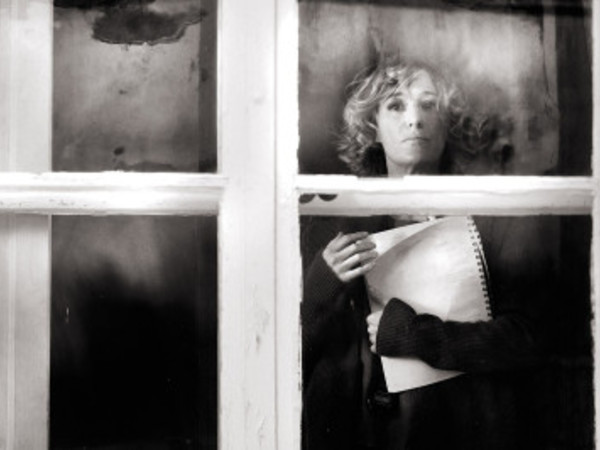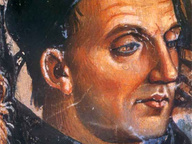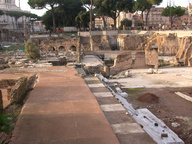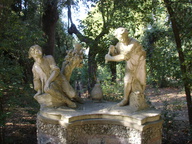Lia Pasqualino. Through

Lia Pasqualino, Valeria Bruni Tedeschi, Chateau d’Etoges, 2012
From 14 Gennaio 2017 to 14 Aprile 2017
Rome
Place: Galleria del Cembalo
Address: Largo della Fontanella di Borghese 19
Times: Tuesday to Friday from 4 pm to 7 pm; Saturday from 10:30 am to 1 pm and from 4 pm to 7 pm or upon appointment. Closed on Mondays
Ticket price: free entrance
Telefono per informazioni: +39 06 83796619
E-Mail info: info@galleriadelcembalo.it
Official site: http://www.galleriadelcembalo.it
Walter Benjamin once underlined as the main character in “The Man of the Crowd” by Edgar Allan Poe, looking fascinated at the crowd through the window of a coffee-shop in London, from what could be thought as a safe position, ends to be fatally attracted and to be dragged into the crowd.
Through is the title of the exhibition by Lia Pasqualino at the Galleria del Cembalo, from January 14th to April 1st 2017. Twenty unpublished black-and-white photographs will be exposed, showing posing subjects or snapshots, seen through the glass. In these images the pane becomes a filter for the framing, for that alluring and unique connection between the subject, the emotion, the memory and the silence, all curdled in the snapshot’s time.
As the observer in Poe’s short story, Lia Pasqualino cuts out the world’s view through the frame imposed by the window glass and, as the flâneur, she discovers a passionate relation with the essence of life. Through the glass everything appears timeless, hallucinatory, recurring.
If it’s true that there is a strange silence when we are looking at the world through a glass wall, it’s also true that we are dealing with the most capturing and charming silence we could imagine. The window is a device which has always been used and celebrated by painting, photography and cinema.
Leon Battista Alberti defined a painting as “a window through which one could see history”. Ortega y Gasset wrote “a corner in the city or in the landscape, seen across a window frame, seems to be detached from reality and acquires an extraordinary ideal heart beat”. Luigi Ghirri described photography as “an open window onto the world”. Sure enough, his photos are filled with windows.
The glass and the window have always played the precious role of enhancing the relation between inside and outside. The glances discovered and shown by Lia seem to look at once inside and outside, always dreamy and busy in looking at somewhere beyond the limit, “at the still point of the turning world” as is said in one of the famous poems by T.S.Eliot.
Lia’s window is the border line between what we are and what we’d like to be, what we look like and what we think we are, Lia’s window is a suspended frame in the empty space through which a state of consciousness can be captured, the never ending moment in which the look fluctuates, undecided between opacity and transparency – a point of transmigration of souls.
It’s not by chance that in the exhibition a large space is dedicated to a sequence of the famous actor of Tadeusz Kantor, Roman Siwulak, one of the legendary characters of The Dead Class, where for the first time on the scene a total metamorphosis takes place. Kantor used to say that it’s impossible to act in theatre, first we must find our acting in life. His death theatre was in fact conceived as a big window for the public to look at their dreams and memories, in the persons of the actors, as dummies hanging between life and death.
As Julio Cortázar writes about photography, no one can easily invent the unusual. We can encourage it, waiting for it to appear, without having to violently separate it from the ordinary. This was the reason why the great writer from Argentina preferred to define photographs as windows on the unusual.
SCARICA IL COMUNICATO IN PDF
COMMENTI

-
 Dal 31 gennaio 2024 al 04 maggio 2025
Fermo | Palazzo dei Priori
Dal 31 gennaio 2024 al 04 maggio 2025
Fermo | Palazzo dei Priori
-
 Dal 20 dicembre 2024 al 04 maggio 2025
Fermo | Palazzo dei Priori
Dal 20 dicembre 2024 al 04 maggio 2025
Fermo | Palazzo dei Priori
-
 Dal 20 dicembre 2024 al 04 maggio 2024
Gorizia | Palazzo Attems Petzenstein
Dal 20 dicembre 2024 al 04 maggio 2024
Gorizia | Palazzo Attems Petzenstein
-
 Dal 18 dicembre 2024 al 18 dicembre 2024
Venezia | Museo Correr
Dal 18 dicembre 2024 al 18 dicembre 2024
Venezia | Museo Correr
-
 Dal 14 dicembre 2024 al 02 marzo 2025
Palermo | Palazzo Abatellis
Dal 14 dicembre 2024 al 02 marzo 2025
Palermo | Palazzo Abatellis
-
 Dal 12 dicembre 2024 al 23 febbraio 2025
Roma | Palazzo Altemps
Dal 12 dicembre 2024 al 23 febbraio 2025
Roma | Palazzo Altemps


